DAVIDE DORMINO – L’ORIGINE DELLA TRAMA – MUGA MULTIMEDIA GALLERY – ROME
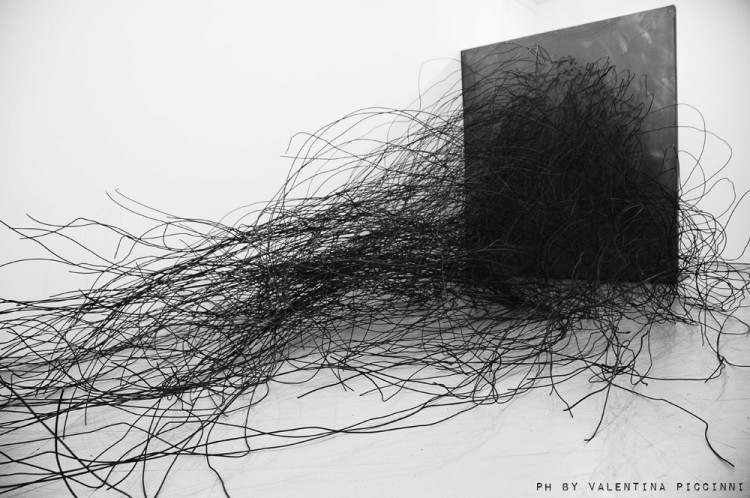
Davide Dormino – L’origine della trama¹
Music by Diego Buongiorno
Exhibition from 28 January to 7 March, 2012
MuGa Multimedia Gallery – Via Giulia 108/109 Roma
Davide Dormino has crafted a “sculpture” to tell the story of the evolution of a creative process: the passage from artisan to artist. This work weaves the plot of the origin and development of the creative act, as it emerges from a specific design carried to the point of destroying the initial image: an artisan’s measured mental work exploding into an artist’s passion-fired folly. The staging of a gesture and the invention of an ordered method generate an interweaving riven by a trauma: the synthesis of the moment when artistic inspiration intervenes and turns everything upside down.
Groups are invited into the single room of the intentionally cramped exhibition space at a pace cadenced by the work’s musical backdrop, where an iron slab almost three metres tall blasts them with a flux of metallic threads. The cascade flows onto the floor and all the way out of the space.
The threads spill out of a design delineated by 530 punctures on the slab; we may perceive a shape, but such is the confusion of the crazed threads that it is nigh on impossible to make out. Moving round to the far side of the slab the image becomes clear, like on the reverse of a piece of embroidery: the weave of a weft picks out a rib cage, which serves as the key to perceiving the meaning of the whole piece.
What we have here is the celebration of the origin of an artist-craftsman’s work: a representation of confusion begat by order, a degeneration of the rule dictated by the blueprint for a design to be reproduced; an outline for embroidering a weft onto a piece of fabric, into a contemporary work of art.
The symmetrical shape of a rib cage describes a perfect machine vital to living – much like work itself – as it protects the heart and lungs and serves as the locus for breathing. Breath lets us know that we are alive in the very moment that we come into this world; initially rational and essential, it carries oxygen to the blood, and then immediately rebels against the organ that has generated it, erasing itself from our gaze. Off it flees, streaking away via interwoven metallic threads which seem to cough and suffocate as they seek a new way of living, as they uncoil into a huge and uncontrollable skein. There is a desire to freeze an impossible instant: the exact moment when creativity intervenes to transform the craftsman into an artist, when a “useful” article becomes “useless” and transmogrifies from rational to irrational.
The rib cage references people who have always used fashion as a pretext for expressing their own artistic inclinations, from Elsa Schiaparelli assisted by Leonor Fini and Salvador Dalì to Rei Kawakubo and Alexander McQueen. The artist has been able to synthesize fashion through embroidery thanks in part to the work of Liliana Tudini, who acted as an embroidery consultant during development of the project.
Music – a sound effect that amplifies the image of the rib cage as a speaker and calls our other senses into the equation – heightens the theatricality of the rite we are asked to experience. The soundtrack was composed by Diego Buongiorno, working from the true music of the origin of the universe recorded by scientist John G. Cramer, Professor of Physics at the University of Washington in Seattle.
¹Translator’s note: the Italian title of the work, L’Origine della Trama, combines the meaning of “weave” and “plot” (as in story) through the single term trama.
MuGa Multimedia Gallery
Via Giulia 108/109 Roma T. + 39 06 45 54 04 84 M. + 39 339 39 65 020
www.muga.it – muga@muga.it
Davide Dormino
Born in Udine in 1973, Dormino is a sculptor and visual artist. Dormino expresses his art through design as a blueprint for sculpture. He seeks out new forms by building upon archaic systems for processing raw materials, iron in particular. He is engaged in an ongoing dialogue with other avenues of artistic expression – notably, fashion and music – in order to constantly feed his own work. Dimension is an important factor in his work: he employs all available scales for representing his concepts, and then places them in an appropriate context – works large and small, materials transformed without contrivance, adapted to his desire to interpret the timeless spirit of recounting an event or expressing his own state of mind as a contemporary artist.
One example is “Breath”, Dormino’s monument in Haiti commissioned by the United Nations a year after the catastrophe; another is his portrait of photographer Fabrizio Ferri at the Un’Ita Italian Artist in New York Exhibition.
Dormino works in Rome and Milan, and teaches sculpture at the Rome University of Fine Arts (R.U.F.A.).
Davide Dormino – L’origine della trama
Musica originale di Diego Buongiorno
Da sabato, 28 gennaio al 7 Marzo 2012
MuGa Multimedia Gallery – Via Giulia 108/109 Roma
Davide Dormino realizza una scultura per raccontare l’evoluzione di un processo creativo: da artigiano ad artista. L’opera racconta l’origine e lo sviluppo del gesto creativo che nasce da un disegno preciso e si sviluppa fino a distruggere l’immagine di partenza. Il lavoro cerebrale e misurato dell’artigiano che esplode nella follia passionale dell’artista. La messa in scena del gesto, dell’invenzione di un metodo ordinato che genera una trama e poi un trauma: la sintesi del momento in cui interviene l’estro e disordina tutto.
All’interno dello spazio espositivo, volutamente piccolo, un ambiente unico dove si entra in gruppi secondo un ritmo preciso scandito dal sottofondo musicale dell’opera, da una lastra di ferro alta quasi tre metri ci investe un flusso di fili metallici. Una cascata che si sprigiona fino al pavimento e corre fino all’esterno dello spazio stesso.
I fili partono da un disegno impresso da 530 fori sulla lastra, si percepisce che rappresenta qualcosa ma la confusione dei fili impazziti lo rende poco leggibile. Girando alle spalle della lastra l’immagine diventa chiara, come nel retro di un ricamo, è la tessitura di una trama: si vede una gabbia toracica che fa intuire il significato di tutto.
E’ la celebrazione dell’origine del lavoro dell’artigiano artista: la rappresentazione della confusione che nasce dall’ordine, della degenerazione in opera d’arte contemporanea della regola dettata dal progetto di un disegno da riprodurre, di un cliche per ricamare la trama su un tessuto.
La forma simmetrica della gabbia toracica è scelta per descrivere una macchina perfetta che serve per vivere, come il lavoro, che protegge il cuore e i polmoni e da dove esce il respiro. Quel respiro che fa capire che siamo vivi nel momento in cui veniamo al mondo; inizialmente razionale e essenziale perchè deve trasportare ossigeno al sangue, si ribella subito all’organo che lo ha generato addirittura cancellandolo ai nostri occhi. Corre via, scappa su fili metallici che si intrecciano, sembrano tossire e soffocare cercando un modo nuovo di vivere, srotolandosi in una enorme matassa che non vuole essere controllata. La volonta di fermare un momento impossibile: il punto esatto dove interviene la creatività e trasforma l’artigiano in artista, dove un manufatto “utile” diventa “inutile”, da razionale a irrazionale.
La gabbia toracica rimanda a chi ha sempre usato la moda come pretesto per esprimere la propria inclinazione artistica, prima Elsa Schiaparelli aiutata da Leonor Fini e Salvador Dalì, poi Rei Kawakubo e Alexander McQueen. La Moda che l’artista sintetizza nel ricamo grazie anche al lavoro fatto con Liliana Tudini che ha affiancato il progetto nell’approfondimento della conoscenza di questa tecnica.
Ad esaltare la teatralità del rito a cui siamo chiamati ad assistere interviene la musica, l’effetto sonoro che amplifica l’immagine della cassa toracica in cassa acustica che chiama in causa gli altri sensi. Il suono è quello che ha composto Diego Buongiorno elaborando la vera musica dell’origine dell’universo registrata dallo scienziato John G. Cramer, professore di Fisica all’Università di Washington di Seattle.
MuGa Multimedia Gallery Via Giulia 108/109 Roma T. + 39 06 45 54 04 84 M. + 39 339 39 65 020 – www.muga.it muga@muga.it
Davide Dormino
Nasce a Udine nel 1973: è scultore e artista visivo. La sua ricerca si esprime attraverso il disegno come progetto per la scultura. Cerca nuove forme elaborando i sistemi arcaici della lavorazione della materia grezza, soprattutto il ferro. Dialoga con altre espressioni artistiche come la musica e la moda per alimentare continuamente il proprio lavoro.
Si confronta con la dimensione, operando ad ogni scala che sia in grado di rappresentare l’idea e inserirla nel contenitore adatto. Opere piccole e grandi, materiali trasformati senza artificio ma adattati alla volontà di interpretare lo spirito, senza tempo, del racconto di un evento o del proprio stato d’animo di artista contemporaneo.
Come “Breath” il Monumento ad Haiti realizzato ad un anno dalla catastrofe, per incarico delle Nazioni Unite, o come il ritratto del fotografo Fabrizio Ferri all’interno della Mostra Un’Ita Italian Artist in New York.
Lavora tra Roma e Milano ed insegna Scultura alla R.U.F.A. Libera Accademia di Belle Arti di Roma.
Position the cursor on the images to view captions, click on images to enlarge them.
Posizionare il cursore sulle immagini per leggere le didascalie; cliccare sulle immagini per ingrandirle.

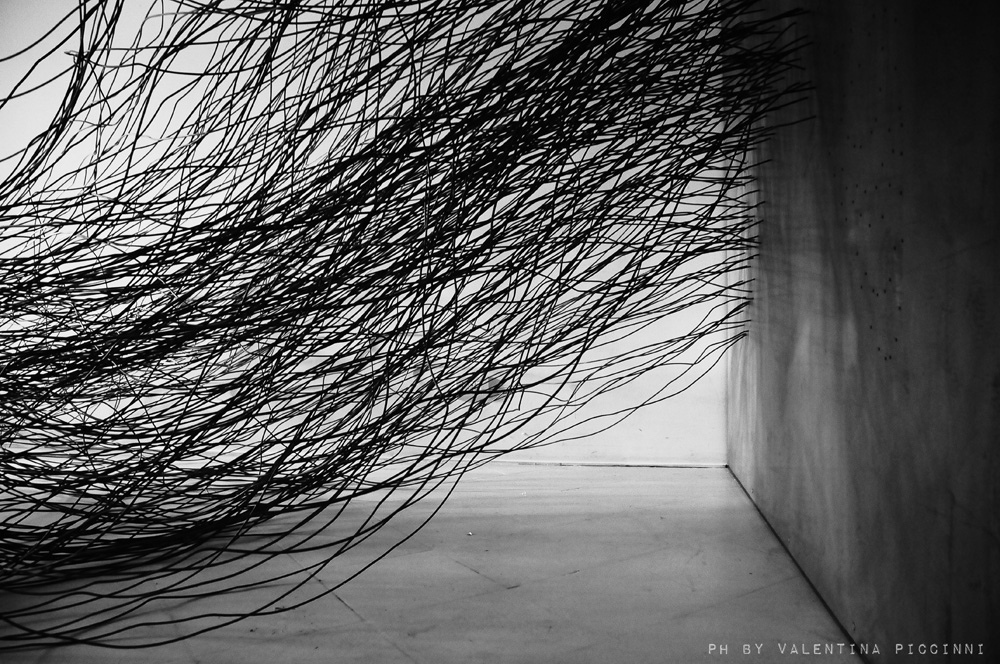
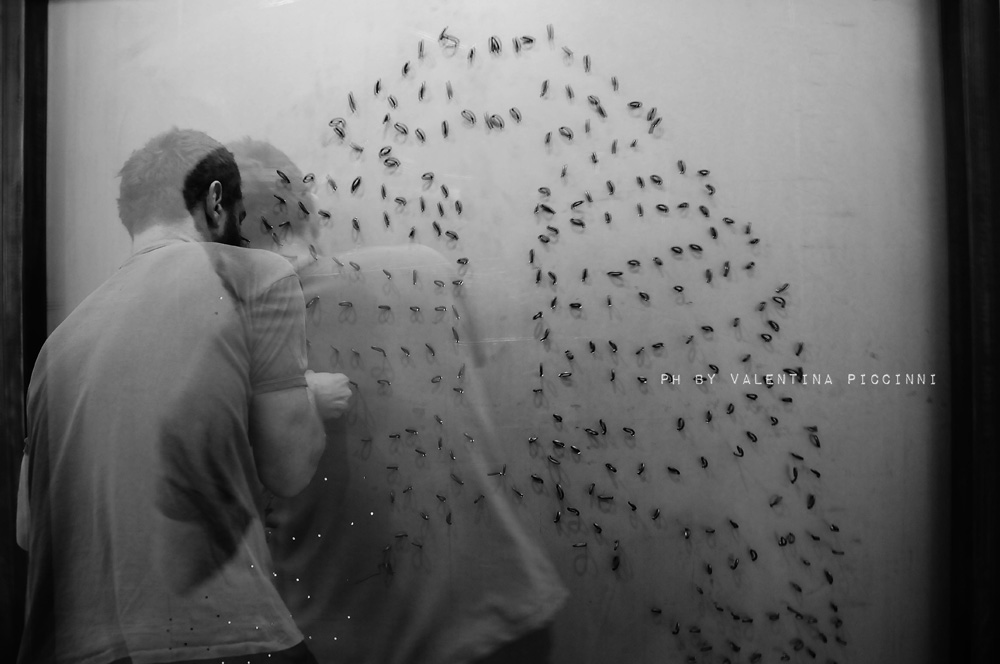
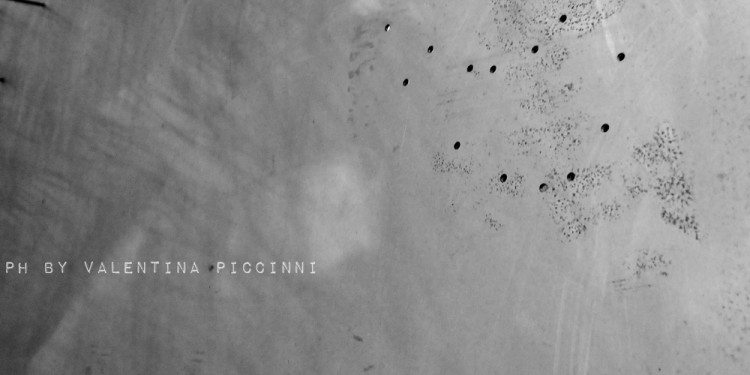
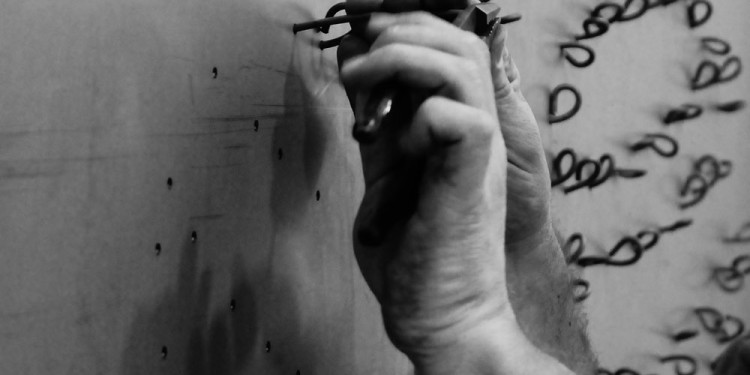
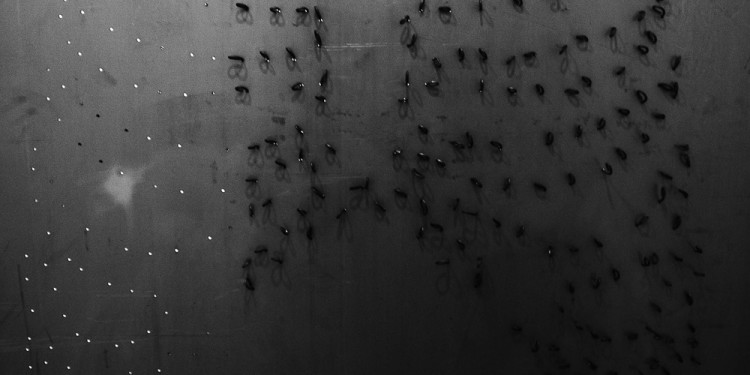
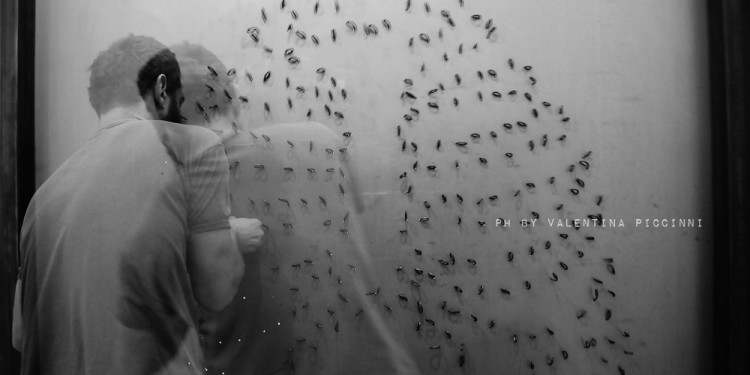
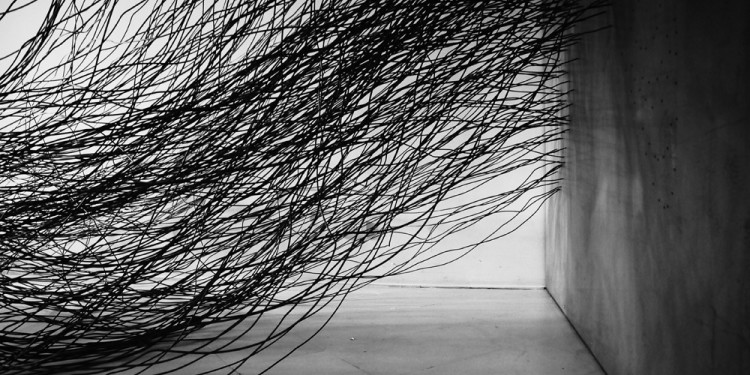
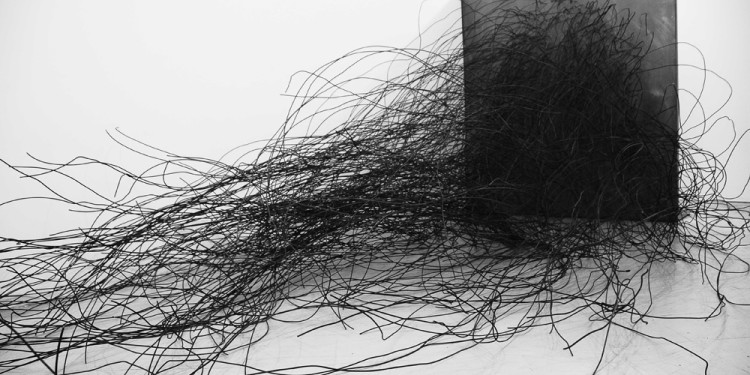
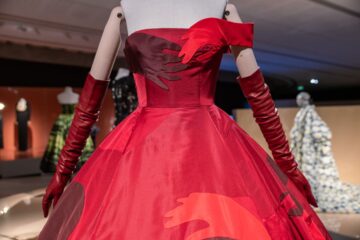
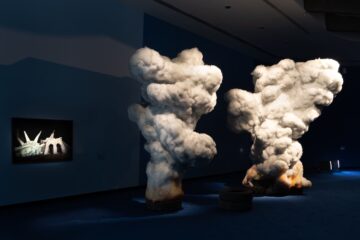

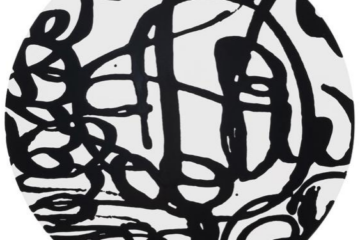

No Comment